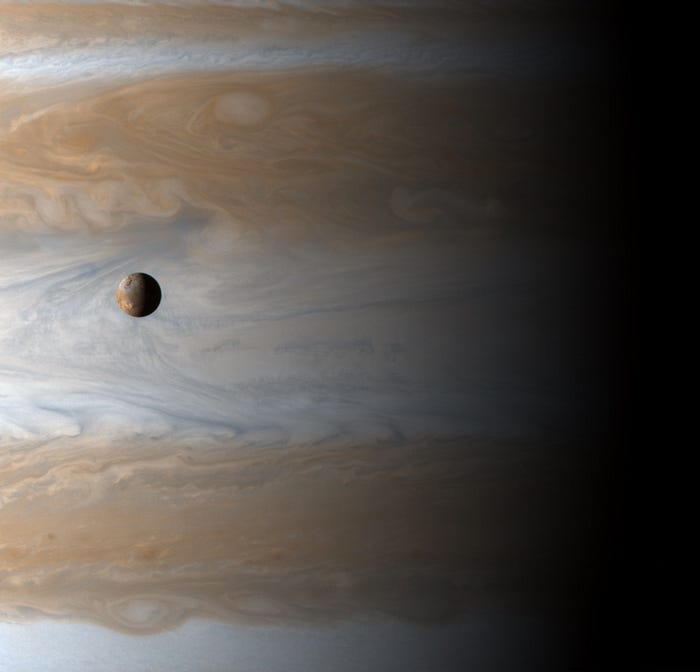Member-only story
The Jupiter Icy Moons Explorer Just Launched, Here’s What it Will Study
The European Space Agency’s (ESA) JUpiter ICy moons Explorer (JUICE) successfully launched on April 14th of this year. This interplanetary spacecraft will take 8 years to reach Jupiter, where it will then study the planet and three of Jupiter’s largest moons, Ganymede, Callisto, and Europa.

Jupiter’s moon Europa in particular has long been a planned target of study for a long time because of its potentially massive liquid water ocean underneath the frozen surface. Surface based telescopes gave us a glimpse at its icy surface, and flybys of Voyager 1 and 2 showed early evidence of liquid water. In 2019, researchers detected water vapor above Europa’s surface for the first time using a spectrograph at the Keck Observatory in Hawaii.
In addition to briefly studying Europa, Jupiter and two of its other moons will also be explored by JUICE during planned flybys. This is because of evidence of water on these moons discovered by NASAs Galileo spacecraft. More recently, in 2021 the Hubble Space Telescope found evidence of an ocean estimated to be 60 miles deep under the icy surface of Ganymede, making this moon a top priority for JUICE.

JUICE, like all spacecraft before it, will take a long time to reach Jupiter. This is in part due to the distance it will have to cover, as well as several planned gravity assists that it will complete. These gravity assists take advantage of Earth and Venus, using their gravity as a planetary slingshot to give JUICE the power it needs to make it to Jupiter while conserving its fuel. In July 2031, it is expected to reach Jupiter, where it will perform its first flyby of Ganymede as it prepares to enter orbit around Jupiter.
Once in orbit around Jupiter, JUICE plans to spend about a year orbiting the planet. During this time, it will slowly orbit closer and closer to the surface, collecting valuable data along the way. In July 2032, it will enter a high inclination orbit, allowing JUICE to study Jupiter’s magnetosphere and polar regions.
